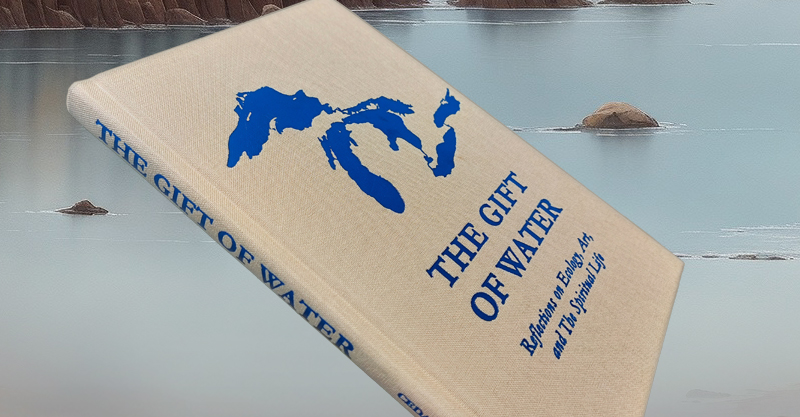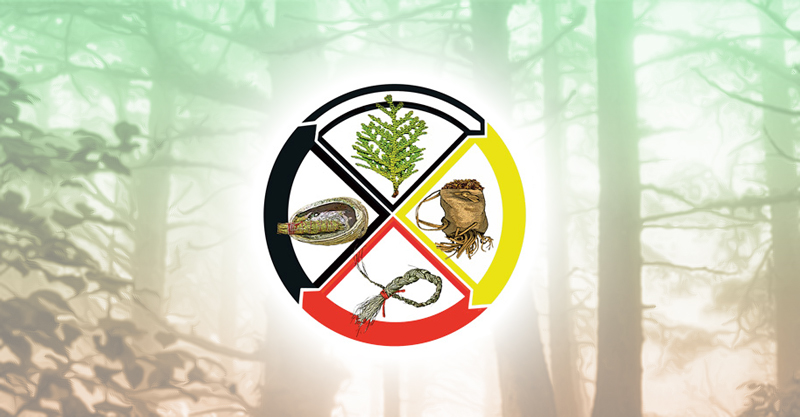The Gift of Living Water
as seen in the Marquette Monthly February, 2020
By Aaron Scholnik
Water in many developed areas of our world is taken for granted. It has always been available from the tap, the store, the well, or even the irrigation ditch, and even in arid or desert climes. In our area of the Upper Midwest, the source of this water is so obvious that it sometime seems to hide in plain sight.
Water is the basis of life as we know it on our planet. Water is in the air, clouds, soil, and in other usually unrecognized places. Water constitutes approximately 60% of the human body, 50% of trees, and up to 90% of many plants. Seventy percent of the earth’s surface is covered with water but only 1% of that water is fresh and drinkable. In our daily thoughts, though, we rarely consider the source of this potable water.
Note the attraction that lakes, rivers, and streams have for human dwelling sites. When we Yoopers buy or build a camp or home, we prize the banks of these bodies of water even if we do not actually enter the water very often. Just relaxing in water’s presence can restore our souls. The rippling of currents and the succession of waves, along with the sounds of moving water, all register deeply within us.
My religious tradition, Judaism, evolved in an area of the world that is arid and dependent on seasonal rains and intermittent streams for crops, flocks, and human sustenance. Perhaps it is not unexpected, then, that Jewish practitioners have had a heightened awareness, respect, and even awe for the gift of water. In the Jewish tradition, from Genesis through the Prophets, Psalms, and other writings, as well as in the Mishnah and Talmud—a tradition that extends over 3500 years—water figures importantly and crucially in the history of the Jews. In the creation stories of Genesis, God forms the earth by first separating the waters above from the waters below. Subsequently, God forms dry land and establishes the courses and boundaries of the oceans, seas, rivers, and streams. It is only then that God creates living things, culminating in the creation of humans.
Abraham, and later Jacob and his sons, migrate to Egypt for arable land because of drought in their region. During the Exodus, the Hebrews wander through the desert, often in dire thirst. They are rescued when Moses, led by God, miraculously strikes a rock and discovers a saving spring of water. Later, Jerusalem was founded, as were many cities in arid regions, at the site of a substantial spring. Gideon chose his warriors by selecting only those who, despite their thirst, drank by scooping up water with their hands and rejecting those who lapped up the water like animals.
Jewish customs frequently involve water. Before meals, the hands are ritually washed with water. After death, the deceased’s body is washed with water multiple times in the rite of Taharah (purification) before burial. Many life-cycle events, such as weddings, childbirth, the onset of menses, conversion to Judaism, and recovery from illness, are marked by immersion in the Mikvah, or ritual bath. Some of these water customs have fallen out of regular practice, except among the Orthodox, but they are now being reclaimed after a hiatus of several generations—a relatively brief span in Jewish time.
One of the requirements for a “kosher” Mikvah, one that conforms with ancient ritual precepts, is that the water used in the ritual bath must be Living Water, “Mayyim Chayyim” in Hebrew. Living water is fresh water that has not been drawn up artificially by humans. The sources of Living Water are rainwater, springs, streams, or lakes.
Living Water is necessary for the traditional religious celebrations of Jewish life-cycle events, but is also symbolic of and necessary for the continuation of the natural cycle of water, from rain to rivers to oceans and great lakes, from evaporation to clouds and back again to rain. Water, so necessary for all life, whether secular or religious, is in fact itself alive. This cycle of Living Water, Mayyim Chayyim, is critical for sustaining all of creation.
The life of our water, our Living Water, is currently threatened, directly and indirectly, on multiple fronts by multiple factors. The great question before us is: How can we protect and cherish this vital gift, our Living Water?
WATER-SAVING TIPS
Water usage leaves a carbon footprint. It takes energy to pump and distribute water — use sparingly.
Bottled water leaves plastic trash and is more expensive per gallon than gasoline. Drink from a re-useable bottle and fill with your own water.
Contributor’s note: Aaron Scholnik is a retired physician in Marquette. He is a member of the Temple Beth Sholom board of directors and a past member of the North American Board of the Union for Reform Judaism. He is the coordinator and one of the founders of the Marquette Interfaith Forum.

“The Gift of Water” columns are offered by the Northern Great Lakes Water Stewards and the Cedar Tree Institute, joined in an interfaith effort to help preserve, protect, and sanctify the waters of the Upper Peninsula.






